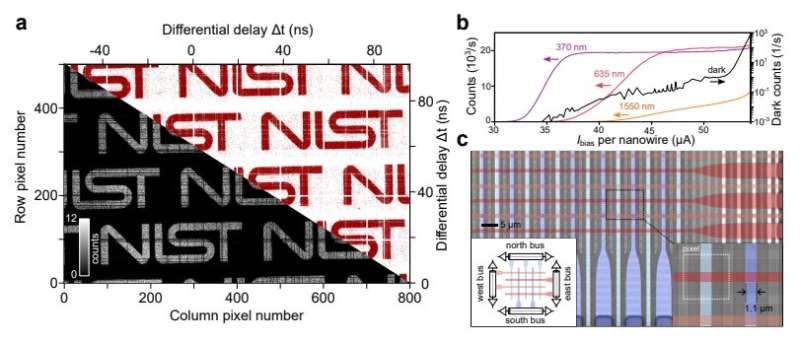New Camera Can Detect a Single Photon With 400x Better Resolution
![]()
A group of researchers has developed a new camera that is sensitive enough to detect a single photon. This large photon camera isn’t unique in its purpose, but separates itself thanks to its ability to capture 400 times the resolution of previous photon cameras.
As explained by Phys, the camera is designed to capture single photons — tiny particle composed of electromagnetic waves that are the basic units that make up light (but have no mass and no charge). Microwaves and X-rays are both made up of photons, for example.
The original technology for detecting and capturing individual photons was developed 20 years ago.
“These detectors operate at very low temperatures and generate a minimum of excess noise, making them ideal for testing the non-local nature of reality, investigating dark matter, mapping the early universe, and performing quantum computation and communication,” the researchers explain in their research paper.
However, there has never been a photon camera that has been able to capture very much resolution.
“This is especially true for one of the most promising detector technologies, the superconducting nanowire single-photon detector (SNSPD),” the researcheres continue. “These detectors have been demonstrated with system detection efficiencies of 98.0%, sub-3-ps timing jitter, sensitivity from the ultraviolet (250nm) to the mid-infrared (10um), and dark count rates below 6.2e-6 counts per second (cps), but despite more than two decades of development they have never achieved an array size larger than a kilopixel.
For reference, a kilopixel is 1,000 times smaller than a megapixel. The largest resolution photon cameras had previously reached never exceeded 20,000 pixels and that wasn’t an SNSPD camera.
But the researchers have changed that with their superconducting-nanowire single-photon camera that is capable of producing images at 400,000 pixels. This camera is now the largest of its type ever designed and its pixel array is 400 times larger than the previous largest photon camera.

Phys explains that this camera can work at various light frequencies from the visible to ultraviolet and infrared and can capture at super high-speed frame rates — as fast as a matter of picoseconds.
This technology is expected to be especially useful in space exploration, as the challenges of photographing distant objects is that, especially with expolanets, there is very little light to work with.
“In exoplanet direct imaging, you are attempting to image planets that are millions of times fainter than their parent stars. It’s the equivalent of trying to see a firefly next to a fully lit football stadium from a plane,” Sarah Steiger, a doctoral student who works with noted optical sensor expert Ben Mazin of the University of California, Santa Barbara, explains.
It also has implications in quantum computing, communications, and even in the medical field such as in brain scanning.
“From a scientific perspective, this is definitely opening a new avenue in optical brain imaging,” Stefan Carp, an associate professor of radiology at the Harvard Medical School, says.
“Other approaches for optically mapping cortical brain flow may have lower costs, but they all have shortcomings impacting signal quality that often require complex signal processing. There is no compromise with nanowires from a performance perspective.”
The full research paper can be found on arxiv.org.